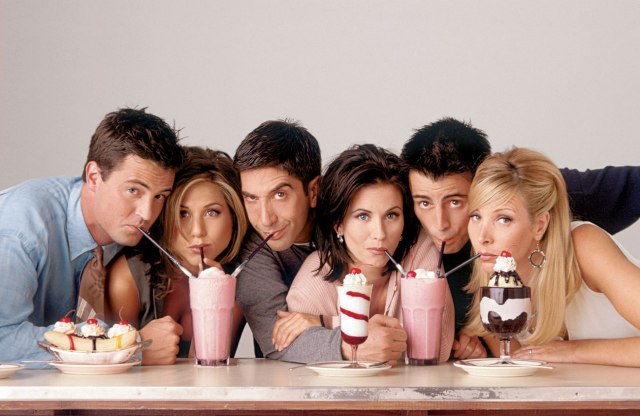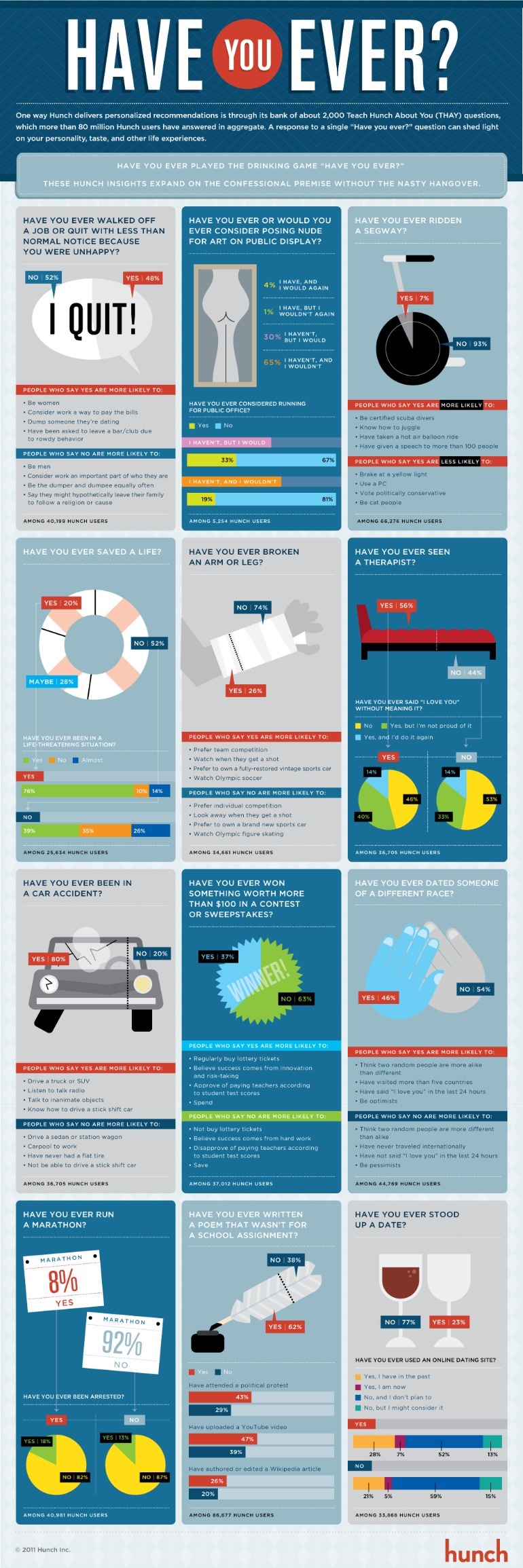Blame fickle social scientists. After the baby-boomers the most researched generation has been that of the millennials — so-called due to their coming of age at the turn of the century. We know what millennails like to eat and drink, how they dress, their politics; we know about their proclivity to sharing, their need for meaning and fun at work; we know they need attention and constant feedback. In fact, we have learned so much — and perhaps so little — from the thousands of, often-conflicting, research studies of millennials that some researchers have decided to move on to new blood. Yes, it’s time to tap another rich vein of research material — Generation K. But I’ll stop after relating what the “K” means in Generation K, and let you form your own conclusions.
[tube]n-7K_OjsDCQ[/tube]
Generation K is named for Katniss, as in the Hunger Games‘ hero Katniss Everdeen. That’s right, if you were born between 1995 and 2002, according to economist Noreena Hertz you are Gen-Katniss.
From the Guardian:
The brutal, bleak series that has captured the hearts of a generation will come to a brutal, bleak end in November when The Hunger Games: Mockingjay – Part 2 arrives in cinemas. It is the conclusion of the Hunger Games saga, which has immersed the young in a cleverly realised world of trauma, violence, mayhem and death.
For fans of Suzanne Collins’s trilogy about a young girl, Katniss Everdeen, forced to fight for survival in a country ruled by fear and fuelled by televised gladiatorial combat, this is the moment they have been waiting for.
Since the first book in the trilogy was published in 2008, Collins’s tale has sold more than 65 million copies in the US alone. The films, the first of which was released in 2012, have raked in more than $2bn worldwide at the box office and made a global star of their leading lady, Jennifer Lawrence, who plays the increasingly traumatised Katniss with a perfect mix of fury and resignation. For the huge appeal of The Hunger Games goes deeper than the fact that it’s an exciting tale well told. The generation who came to Katniss as young teens and have grown up ploughing through the books and queuing for the movies respond to her story in a particularly personal way.
As to why that might be, the economist and academic Noreena Hertz, who coined the term Generation K (after Katniss) for those born between 1995 and 2002, says that this is a generation riddled with anxiety, distrustful of traditional institutions from government to marriage, and, “like their heroine Katniss Everdeen, [imbued with] a strong sense of what is right and fair”.
“I think The Hunger Games resonates with them so much because they are Katniss navigating a dark and difficult world,” says Hertz, who interviewed 2,000 teenagers from the UK and the US about their hopes, fears and beliefs, concluding that today’s teens are shaped by three factors: technology, recession and coming of age in a time of great unease.
“This is a generation who grew up through 9/11, the Madrid bombings, the London bombings and Islamic State terrors. They see danger piped down their smartphones and beheadings on their Facebook page,” she says. “My data showed very clearly how anxious they are about everything from getting into debt or not getting a job, to wider issues such as climate change and war – 79% of those who took part in my survey worried about getting a job, 72% worried about debt, and you have to remember these are teenagers.
“In previous generations teenagers did not think in this way. Unlike the first-era millennials [who Hertz classes as those aged between 20 and 30] who grew up believing that the world was their oyster and ‘Yes we can’, this new generation knows the world is an unequal and harsh place.”
Writer and activist Laurie Penny, herself a first-era millennial at the age of 29, agrees. “I think what today’s young people have grasped that my generation didn’t get until our early 20s, is that adults don’t know everything,” she says. “They might be trying their best but they don’t always have your best interests at heart. The current generation really understands that – they’re more politically engaged and they have more sense of community because they’re able to find each other easily thanks to their use of technology.”
One of the primary appeals of the Hunger Games trilogy is its refusal to sugarcoat the scenarios Katniss finds herself in. In contrast to JK Rowling’s Harry Potter series, there are no reliable adult figures to dispense helpful advice and no one in authority she can truly trust (notably even the most likeable adult figures in the books tend to be flawed at best and fraudulent at worst). Even her friends may not always have her back, hard as they try – Dumbledore’s Army would probably find themselves taken out before they’d uttered a single counter-curse in the battlegrounds of Panem. At the end of the day, Katniss can only rely on one person, herself.
“Ultimately, the message of the Hunger Games is that everything’s not going to be OK,” says Penny. “One of the reasons Jennifer Lawrence is so good is because she lets you see that while Katniss is heroic, she’s also frightened all of the time. She spends the whole story being forced into situations she doesn’t want to be in. Kids respond because they can imagine what it’s like to be terrified but know that you have to carry on.”
It’s incontestable that we live in difficult times and that younger generations in particular may be more acutely aware that things aren’t improving any time soon, but is it a reach to say that fans of the Hunger Games are responding as much to the world around them as to the books?
Read the entire story here.
Video: The Hunger Games: Mockingjay Part 2 Official Trailer – “We March Together”. Courtesy of the Hunger Games franchise.



 Research shows how children as young as four years empathize with some but not others. It’s all about the group: which peer group you belong to versus the rest. Thus, the uphill struggle to instill tolerance in the next generation needs to begin very early in life.
Research shows how children as young as four years empathize with some but not others. It’s all about the group: which peer group you belong to versus the rest. Thus, the uphill struggle to instill tolerance in the next generation needs to begin very early in life. Why study the science of climate change when you can study the complexities of climate change deniers themselves? That was the question that led several groups of independent researchers to study why some groups of people cling to mistaken beliefs and hold inaccurate views of the public consensus.
Why study the science of climate change when you can study the complexities of climate change deniers themselves? That was the question that led several groups of independent researchers to study why some groups of people cling to mistaken beliefs and hold inaccurate views of the public consensus.


 Social media is great for notifying members in one’s circle of events in the here and now. Of course, most events turn out to be rather trivial, of the “what I ate for dinner” kind. However, social media also has a role in spreading word of more momentous social and political events; the Arab Spring comes to mind.
Social media is great for notifying members in one’s circle of events in the here and now. Of course, most events turn out to be rather trivial, of the “what I ate for dinner” kind. However, social media also has a role in spreading word of more momentous social and political events; the Arab Spring comes to mind. Social scientists have had Generation-Y, also known as “millenials”, under their microscopes for a while. Born between 1982 and 1999, Gen-Y is now coming of age and becoming a force in the workplace displacing aging “boomers” as they retire to the hills. So, researchers are now looking at how Gen-Y is faring inside corporate America. Remember, Gen-Y is the “it’s all about me generation”; members are characterized as typically lazy and spoiled, have a grandiose sense of entitlement, inflated self-esteem and deep emotional fragility. Their predecessors, the baby boomers, on the other hand are often seen as over-bearing, work-obsessed, competitive and narrow-minded. A clash of cultures is taking shape in office cubes across the country as these groups, with such differing personalities and philosophies, tussle within the workplace. However, it may not be all bad, as columnist Emily Matchar, argues below — corporate America needs the kind of shake-up that Gen-Y promises.
Social scientists have had Generation-Y, also known as “millenials”, under their microscopes for a while. Born between 1982 and 1999, Gen-Y is now coming of age and becoming a force in the workplace displacing aging “boomers” as they retire to the hills. So, researchers are now looking at how Gen-Y is faring inside corporate America. Remember, Gen-Y is the “it’s all about me generation”; members are characterized as typically lazy and spoiled, have a grandiose sense of entitlement, inflated self-esteem and deep emotional fragility. Their predecessors, the baby boomers, on the other hand are often seen as over-bearing, work-obsessed, competitive and narrow-minded. A clash of cultures is taking shape in office cubes across the country as these groups, with such differing personalities and philosophies, tussle within the workplace. However, it may not be all bad, as columnist Emily Matchar, argues below — corporate America needs the kind of shake-up that Gen-Y promises. [div class=attrib]From the New York Times:[end-div]
[div class=attrib]From the New York Times:[end-div]
 Why can’t our kids tie their own shoes?
Why can’t our kids tie their own shoes?
 Author Susan Cain reviews her intriguing book, “Quiet : The Power of Introverts” in an interview with Gareth Cook over at Mind Matters / Scientific American.
Author Susan Cain reviews her intriguing book, “Quiet : The Power of Introverts” in an interview with Gareth Cook over at Mind Matters / Scientific American. A group of new research studies show that our left- or right-handedness shapes our perception of “goodness” and “badness”.
A group of new research studies show that our left- or right-handedness shapes our perception of “goodness” and “badness”.
 [div class=attrib]Thomas Rogers for Slate:[end-div]
[div class=attrib]Thomas Rogers for Slate:[end-div] Clarifying intent, emotion, wishes and meaning is a rather tricky and cumbersome process that we all navigate each day. Online in the digital world this is even more challenging, if not sometimes impossible. The pre-digital method of exchanging information in a social context would have been face-to-face. Such a method provides the full gamut of verbal and non-verbal dialogue between two or more parties. Importantly, it also provides a channel for the exchange of unconscious cues between people, which researchers are increasingly finding to be of critical importance during communication.
Clarifying intent, emotion, wishes and meaning is a rather tricky and cumbersome process that we all navigate each day. Online in the digital world this is even more challenging, if not sometimes impossible. The pre-digital method of exchanging information in a social context would have been face-to-face. Such a method provides the full gamut of verbal and non-verbal dialogue between two or more parties. Importantly, it also provides a channel for the exchange of unconscious cues between people, which researchers are increasingly finding to be of critical importance during communication.
 One of the most fascinating and (in)famous experiments in social psychology began in the bowels of Stanford University 40 years ago next month. The experiment intended to evaluate how people react to being powerless. However, on conclusion it took a broader look at role assignment and reaction to authority.
One of the most fascinating and (in)famous experiments in social psychology began in the bowels of Stanford University 40 years ago next month. The experiment intended to evaluate how people react to being powerless. However, on conclusion it took a broader look at role assignment and reaction to authority.